Riding the Waves with Grace: The Power of Balance Exercises in Surfing
Have you ever fancied the idea of conquering the mighty waves on a stag party adventure? Well, grab your wetsuits and prepare for a rip-roaring time! In this guide, we’ll take you on a thrilling journey through the art of balance in surfing. We’ll cover a range of topics, including essential safety tips, clever tips and tricks for beginners, and, of course, an array of balance exercises that will have you riding those waves like a true Irish legend. So, gather ’round, fellow wave warriors, and let’s dive into the exhilarating world of surfing.
Tips and Tricks for Beginner Surfers
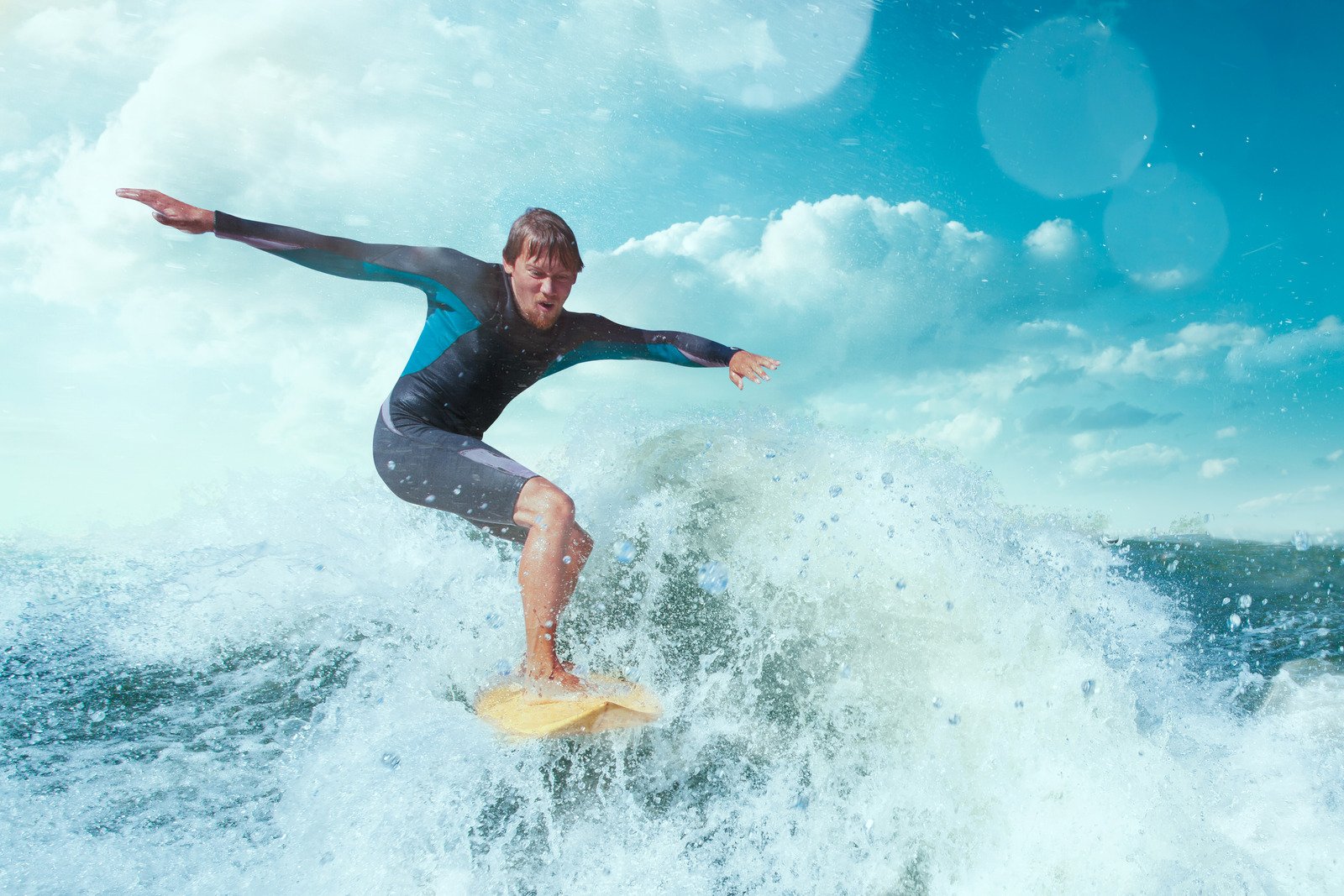
Before we get into the mental stuff, lads, we have some tips and tricks that’ll have you riding waves in no time. Grab your lucky shamrock, don your wetsuit armor, and prepare for a journey filled with laughter and splashes.
Start with a Beginner-Friendly Surfboard
Ah, the surfboard, your trusty steed on this aquatic adventure. Opt for a longboard or a soft-top surfboard, like a fluffy cloud floating on the sea. They offer stability and buoyancy, making it easier for you to stay balanced and paddle like a seaworthy champion.
Start with Small Waves
Patience, young Padawans! Begin your surfing odyssey on small, rolling waves that tickle your toes and whisper tales of adventure. These waves are like the training wheels of the sea, offering forgiveness and a safe haven for beginners. It’s the perfect place to hone your skills before taking on the big guns.
Position Yourself Correctly
When you venture into the sea, position yourself wisely, just like a sly fox surveying the landscape. Paddle out to the outside of the breaking waves, where you’ll have a bird’s-eye view of the sets rolling in. This strategic move will give you ample time to prepare for the perfect wave and launch yourself into a surfing frenzy.
Focus on Timing and Balance
Ah, the dance of timing and balance, as intricate as an Irish jig! Wait for the right moment to catch a wave, like a cunning leprechaun waiting for the rainbow’s end. Ensure the wave has enough gusto to carry you towards shore. As you paddle, maintain a low and balanced position on your board, like a skilled tightrope walker defying gravity. Balance, my friends, is the key to conquering those aquatic mountains.
Stay Relaxed and Have Fun
Remember, dear surfers, this journey is not just about conquering waves; it’s about embracing the spirit of the sea. Relax your body, let your worries wash away, and bask in the joy of the ride. Even when you face the inevitable wipeouts, treat them as comedic interludes, for laughter is the true elixir of life.
Don’t Give Up
Surfing, like life itself, is a series of ups and downs. Don’t let the initial wipeouts dampen your spirit or dissolve your determination. Keep paddling, keep trying, and keep that Irish persistence alive. With every tumble, you’re one step closer to riding those waves with the grace of a Celtic god.
Mastering the Art of Balance
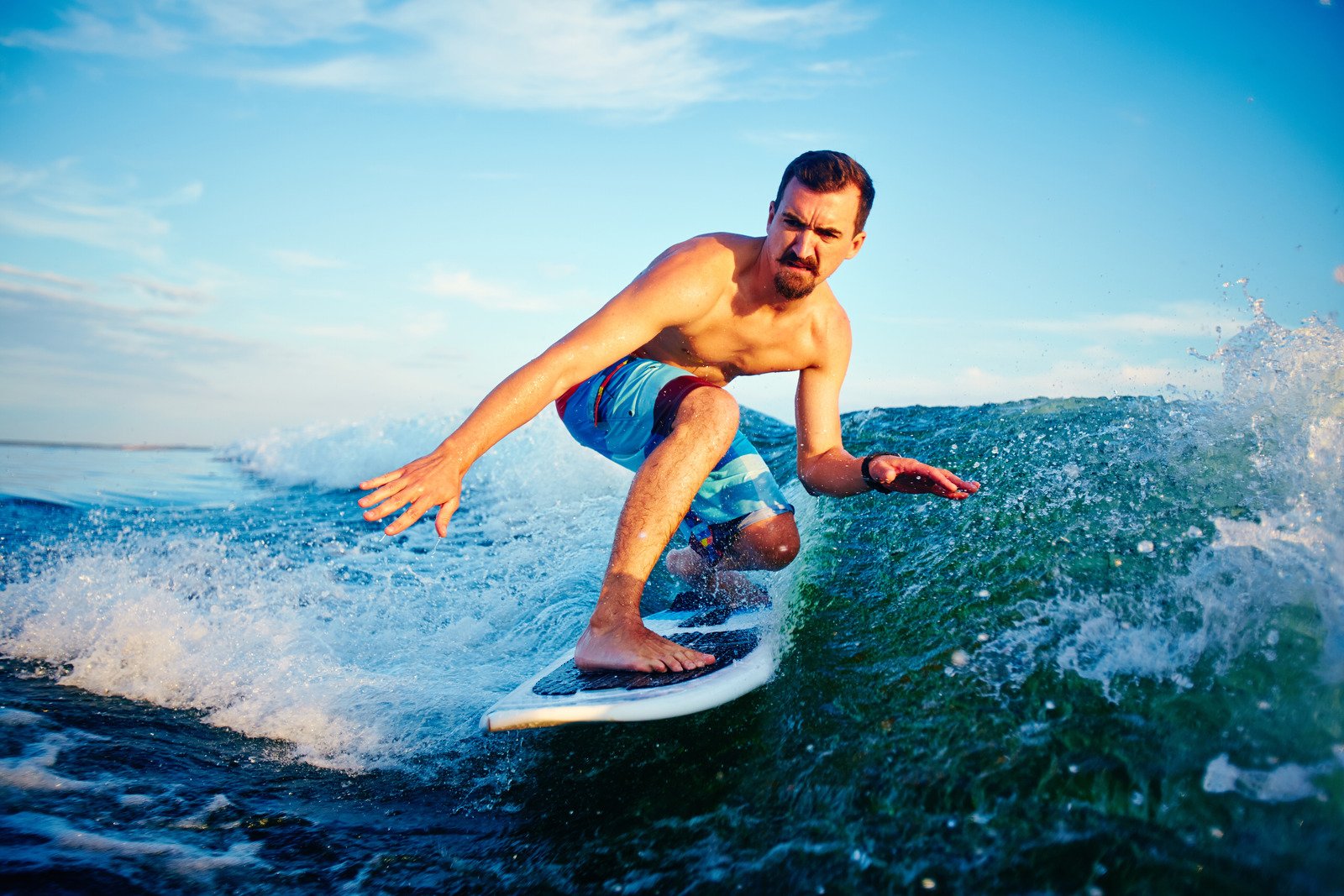
Now, before we hit the waves like the mighty sea gods we are, let’s get the lowdown on balance. Picture this, lads: you’re atop a surfboard, gliding across the water, and maintaining equilibrium like a true Irish dancer on a Saturday night. Balance is the name of the game here, and it all starts with a strong core. Trust us, that pint of Guinness belly can be an asset!
Surfing-Specific Balance Drills
Single-Leg Balance
- Stand tall with your feet hip-width apart and arms relaxed at your sides.
- Shift your weight onto your left foot and lift your right foot off the ground, bringing your knee up towards your chest.
- Find your balance and try to maintain a steady posture, like a seasoned surfer standing tall on a wave.
- Challenge yourself by extending your arms outward or placing your hands on your hips.
- Hold the pose for as long as you can, then repeat on the other leg.
Bosu Ball Balance
- Place the Bosu ball on the ground with the rounded side up.
- Step onto the Bosu ball, positioning your feet hip-width apart and finding your balance in the wobbly terrain.
- Engage your core, relax your shoulders, and keep your gaze forward.
- Allow your body to adjust to the instability of the Bosu ball, using your muscles to maintain balance.
- Challenge yourself by adding arm movements or small squats while balancing.
- Take caution and ensure you have proper support and supervision when using the Bosu ball.
Indo Board Training
- Set up the Indo board on a stable surface, such as a carpeted area or grass.
- Place your board atop the Indo board, ensuring it’s secure.
- Step onto the board, finding your balance in the center.
- Engage your core muscles and relax your body, allowing subtle movements to help you maintain balance.
- Imagine you’re riding the rolling waves, adjusting your body position to mimic the feeling of surfing.
- Start with small shifts in weight from side to side and progress to more challenging movements as you gain confidence.
Core-Strengthening Exercises
Plank Variations
- Begin in a push-up position, with your hands directly under your shoulders and your body forming a straight line from head to heels.
- Engage your core muscles, squeeze your glutes, and maintain a neutral spine.
- Start with a traditional plank, holding the position for as long as you can while maintaining proper form.
- Explore variations by lifting one leg or arm, tapping opposite shoulders, or attempting side planks.
- Challenge yourself and your mates to see who can hold the plank the longest without collapsing like a stack of Guinness pints.
Russian Twists
- Sit on the ground with your knees bent and feet flat on the floor.
- Lean back slightly, engaging your core muscles.
- Hold a medicine ball or any weighted object in your hands, close to your chest.
- Twist your torso to the right, bringing the medicine ball towards the ground on the right side of your body.
- Return to the center and twist to the left, tapping the ball on the left side.
- Continue alternating sides in a controlled and rhythmic motion, imagining yourself performing a lively Irish dance with a twist.
Stability Ball Exercises
- Sit on a stability ball and carefully walk your feet forward, allowing the ball to roll under your lower back until it supports your mid-back and hips.
- Engage your core muscles and maintain a stable position on the ball.
- Perform exercises such as pelvic tilts, seated twists, or leg lifts while balancing on the ball.
- Embrace the playful side of this exercise, pretending you’re riding the waves on a giant, bouncy shamrock, all while working your core muscles.
Incorporating Balance Training into Surfing Preparations
Stag party preparations should never be taken lightly, lads. Make sure to add some balance exercises to your pre-trip fitness routine. Imagine the looks on your mates’ faces as you all gather ’round, attempting to balance on one leg while cracking jokes about your wobbly attempts. It’s all about building those bonds before you hit the surf!
Safeguarding Your Surfing Stag Party: Tips and Wise Words for the Waves
Now, listen up, lads, safety comes first! We don’t want any stag parties turning into unexpected reenactments of Titanic scenes:
Choose Suitable Surfing Spots
- Select surfing spots that match the skill levels of your group.
- Avoid challenging breaks if you’re new to surfing.
- Research local conditions, tides, and potential hazards beforehand.
Wear Proper Safety Gear
- Don your wetsuits like proud Irish warriors ready for battle.
- Wear appropriate surf helmets to protect your noggin.
- Don’t forget to use leash straps to keep your board close.
Be Mindful of Ocean Conditions
- Stay informed about current weather and wave conditions.
- Watch out for rip currents and strong undertows.
- Pay attention to local surf advisories and warnings.
Buddy Up
- Surf with a buddy or in a group to enhance safety.
- Keep an eye out for each other and provide assistance if needed.
- Share the stoke and celebrate each other’s successes.
Learn Basic Surfing Etiquette
- Respect the lineup and take turns catching waves.
- Communicate with fellow surfers using hand signals or friendly nods.
- Avoid dropping in on someone else’s wave to prevent collisions.
Stay Hydrated and Rested
- Surfing can be physically demanding, especially for stag parties fueled by good times.
- Drink plenty of water to stay hydrated throughout the day.
- Take breaks and rest when needed to avoid fatigue and maintain focus.
Respect the Environment
- Leave no trace behind and dispose of any trash properly.
- Be mindful of marine life and refrain from interfering with their natural habitat.
- Support local initiatives that promote ocean conservation.
Surfing Balance Challenges and Team Building
Stag parties are all about camaraderie and creating memories that’ll last a lifetime. Take group surfing lessons together, and turn it into a friendly competition. Who can balance the longest? Who can catch the most epic wave? Remember, the banter and laughter are just as important as staying upright. Teamwork makes the dream work, lads!
Your Wavey Adventures Await
My fellow wave warriors, with the skills and knowledge you’ve acquired, you’re primed for an unforgettable surfing adventure along the mesmerizing Irish coastline. But wait, the final step on this epic journey awaits—contacting us to book your Stag Party. At Stagit, we’re not just passionate about waves and wild festivities; we’re dedicated to crafting an experience that surpasses your wildest expectations. From personalized itineraries to expert guidance and the touch of Irish hospitality, we’re here to ensure your stag party is a roaring success. So don’t hesitate, dear friends, reach out to us today and let’s turn your surfing dreams into reality. The waves are calling, the craic is waiting, and your unforgettable Stag Party is just a click away.
If you think Surfing is not for you, stil grab your lads we have pots of stag party activities in Galway for you.
Embrace Your Inner Marksman with Clay Pigeon Shooting Tips and the Perfect Beginner Gun
If you’re planning a stag party that goes beyond the usual pub crawl, then clay pigeon shooting might just be the thrill you’re looking for. But before you go all trigger-happy, let’s dive into some essential tips for beginners on how to take aim like a true Irish sharpshooter. And yes, we’ll even guide you on selecting the perfect clay pigeon shooting beginners gun. Get ready to hit those targets and have a blast, lads!
Understanding Clay Pigeon Shooting Basics
Now, before we start firing away like madmen, it’s important to understand the basics of clay pigeon shooting. It’s like shooting birds, but, well, not real ones. Instead, these are ceramic discs flung into the air, just begging to be shattered into a thousand pieces. And to accomplish this noble task, you’ll need the right equipment, starting with a trusty beginners gun.
Essential Tips for Beginners in Clay Pigeon Shooting
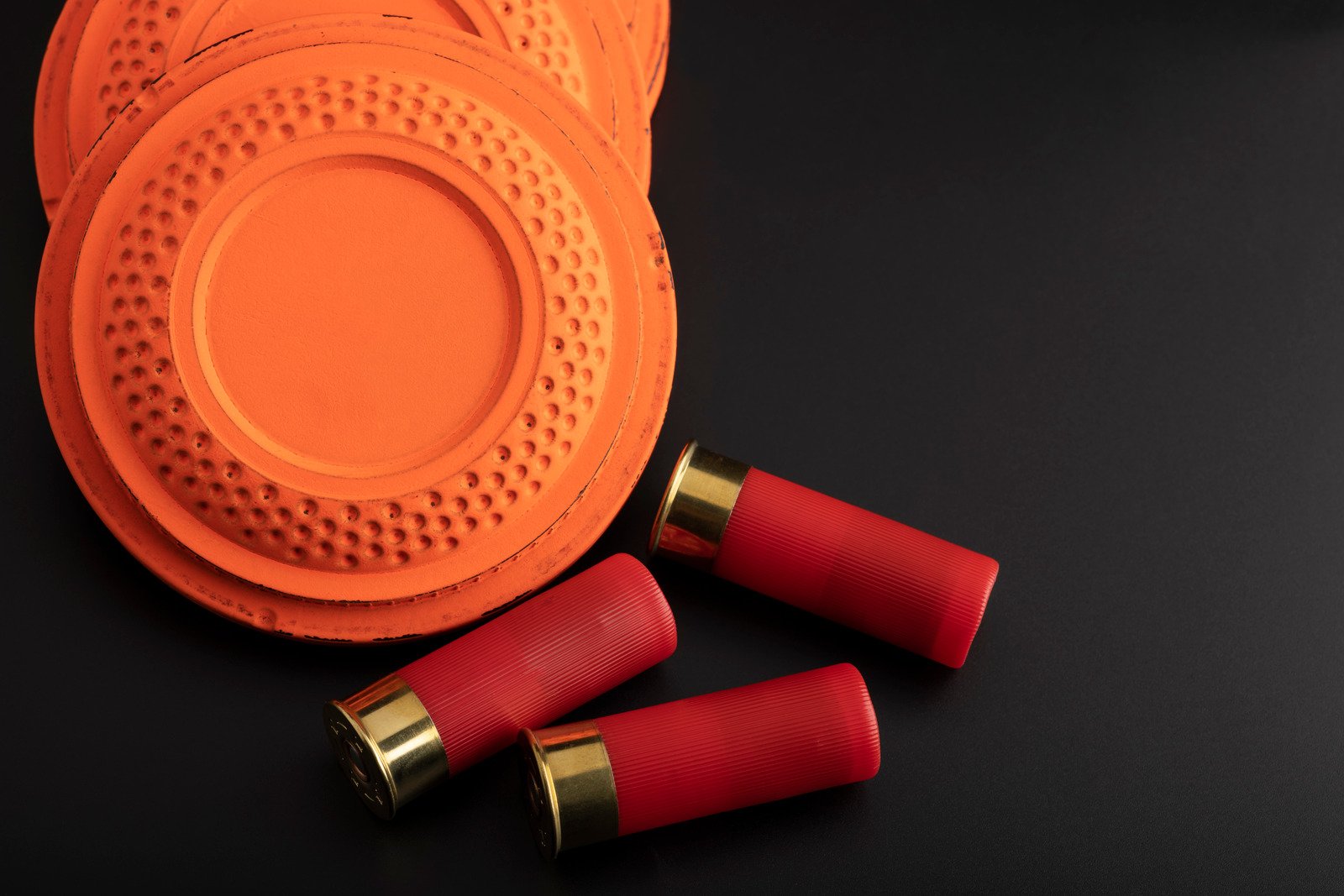
Proper Stance and Body Positioning
First things first, lads – steady yourself! A sturdy stance is the foundation of great shooting. Plant those feet firmly on the ground, shoulder-width apart, and make sure your body is aligned with the target. Stand tall and proud, just like a true Irishman defending his favorite pub.
Mastering Hand-Eye Coordination
Ah, the magical dance between your eyes and hands. To hit those flying targets, you’ll need some good ol’ hand-eye coordination. Practice tracking the targets with your eyes, like a hawk stalking its prey. Soon enough, your hands will learn to follow suit, and you’ll be cracking those clay pigeons in no time.
Focusing on Target Tracking
Keep your eyes sharp, lads! As those clay pigeons soar through the air, focus on tracking them with the intensity of an Irishman spotting a free pint at the bar. Anticipate their flight path and get ready to take aim like a true marksman.
Timing and Lead Shooting
Here’s the secret to hitting those elusive clay pigeons – timing and leading. As the target flies, you need to shoot ahead of it, just like an Irishman predicting when the rain will start (it’s always sooner than you think!). Remember, timing is everything, so lead your shots with confidence.
Managing Recoil and Follow-through
When that gun goes boom, lads, be prepared for some recoil. It’s like getting a friendly tap on the shoulder from an old mate. Don’t let it throw you off balance. Stay focused, maintain your aim, and follow through with your shot like you’re toasting to victory at the pub. Hold that form until the clay pigeon shatters into dust.
Selecting the Right Gun for Clay Pigeon Shooting Beginners
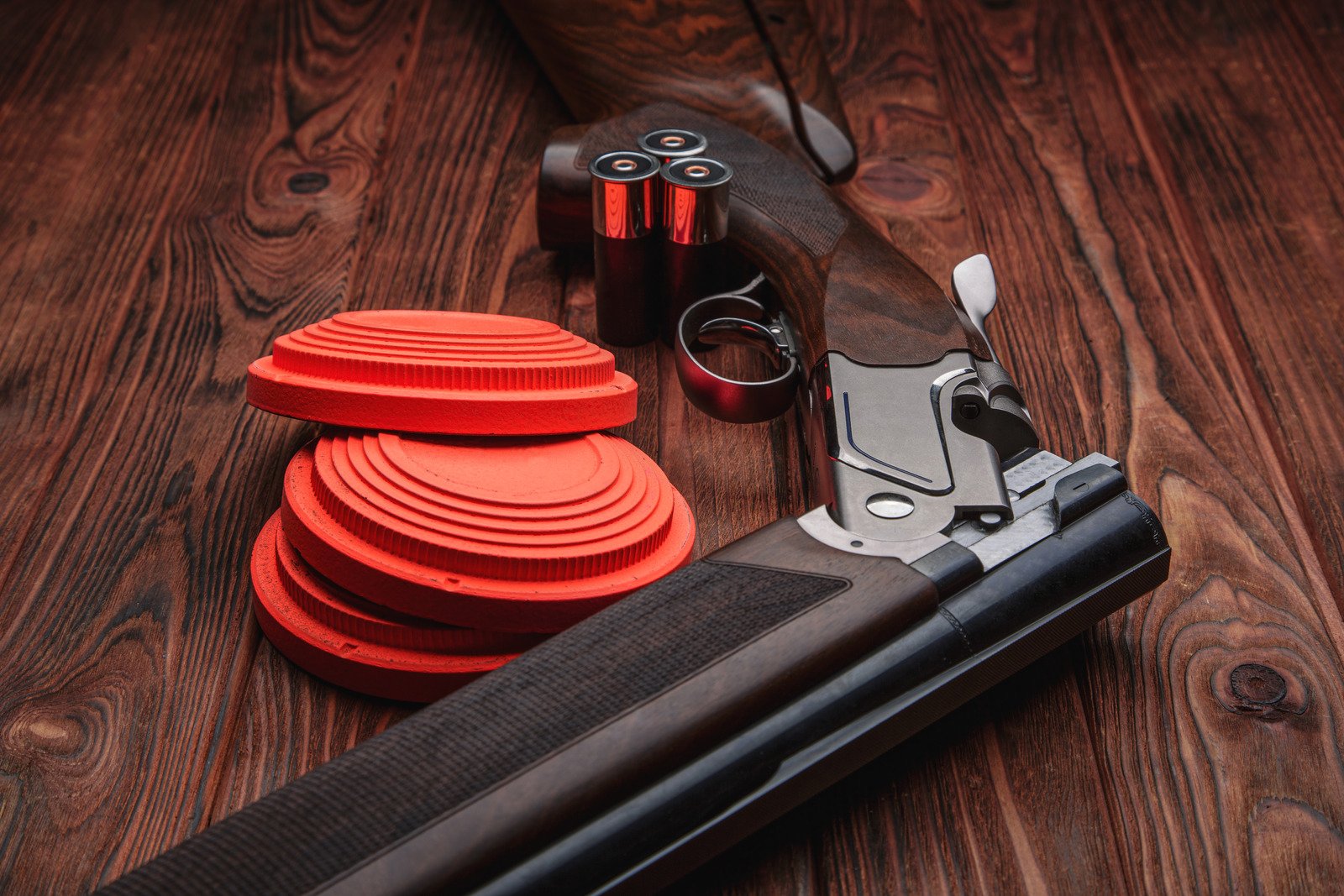
Now, let’s talk about finding the perfect clay pigeon shooting beginner gun. It’s like searching for that pot of gold at the end of the rainbow – you want something reliable, comfortable, and suited to your shooting style. Consider the gauge, weight, and stock dimensions that work best for you.
Remember, a well-fitted gun is like a finely tailored suit – it makes you look and feel good, lads. Here are some grand clay pigeon shooting guns for you beginner lads:
Winchester SX4 Compact
This 12-gauge shotgun is an excellent choice for beginners in clay pigeon shooting. Its compact design, manageable recoil, and consistent performance make it a reliable companion for honing your shooting skills. With the Winchester SX4 Compact in your hands, you’ll be hitting those clay pigeons with precision and grace.
Browning Citori CXS
Designed with clay target sports in mind, the Browning Citori CXS
offers a range of gauges, including 12 and 20 gauge, suitable for beginners. Its well-balanced feel, versatility, and adjustable features make it a favored option among those starting their clay pigeon shooting journey. Get ready to conquer the skies!
Beretta A300 Outlander
This semi-automatic shotgun from Shamrock Firearms combines durability, ease of use, and affordability, making it an ideal choice for beginners.
Available in a 12-gauge option, the Beretta A300 Outlander delivers smooth shooting experiences, allowing you to focus on improving your aim and enjoying the thrill of clay pigeon shooting.
Mossberg 500 Bantam
Specifically designed for shooters with smaller frames, the LepMossberg 500 Bantam is a 20-gauge pump-action shotgun that offers both comfort and reliability. Its lightweight build, compact design, and user-friendly features make it a great companion for beginners stepping into the world of clay pigeon shooting. It’s time to show those clay pigeons the luck of the Irish!
CZ-USA Redhead Premier
The CZ-USA Redhead Premier over-under shotgun provides a 12-gauge option that blends solid craftsmanship, smooth operation, and excellent balance.
Whether you’re a beginner or an experienced shooter, the CZ-USA Redhead Premier offers the performance and reliability you need to excel in clay pigeon shooting. Channel your inner marksman and let your shots soar.
Safety Precautions and Etiquette
Safety first, always! When it comes to clay pigeon shooting, following safety precautions is as vital as a perfectly poured pint of Guinness. Respect the rules, listen to your instructor, and never, I repeat, never go all “wild west” with your shooting. And of course, be sure to cheer on your mates’ shots with plenty of banter and Irish humor.
Hit the Clay Pigeons and Unleash Your Inner Marksman!
There you have it, lads – your ultimate guide to taking aim in clay pigeon shooting like true Irish legends. With the right equipment, solid techniques, and a touch of Irish charm, you’ll be breaking clay pigeons left and right. So gather your mates wether you are from Carrick on shannon, Kilkenny or Galway, book your stag party with us at Stagit, and get ready for an unforgettable experience that’ll make you feel like the kings of the shooting range. Cheers to hitting those targets and raising a glass to your mates!
Essential Safety Equipment and Attire for Quad Biking Adventures on Stag Parties
Howaya lads!! Welcome to Stagit, your one-stop shop for epic stag party adventures. And speaking of adventures, what better way to kick off your stag party than with an exhilarating quad-biking experience? But hold your horses (or should I say, quads!) before you hit the trails, because we’re here to give you the lowdown on the what-to-wear in quad biking adventure in style and safety!
The Importance of Safety on Stag Party Quad Biking Adventures
Now, we all know that stag parties can get a bit wild and rowdy. But when it comes to quad biking, safety is no joke. We want you lads to have a blast while keeping all your limbs intact. That’s why we take safety seriously and ensure that your quad biking experience is as safe as it is exciting.
Essential Safety Equipment for Quad Biking
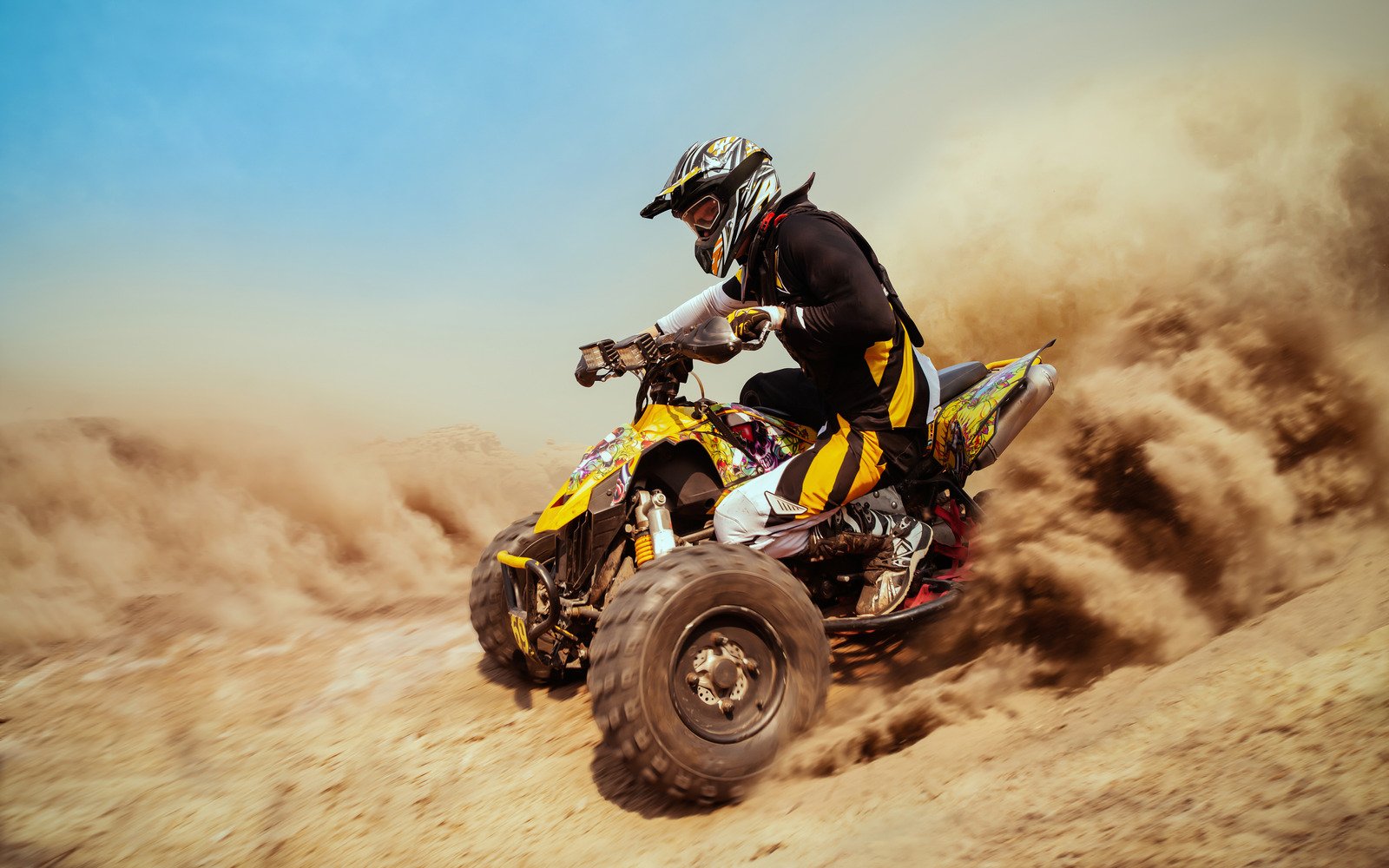
As you prepare to conquer the trails and create memories that will be talked about for ages, it’s important to gear up with the right safety equipment.Let’s dive into the essential gear that will keep you protected and ready for quad biking action!
Helmet
Think of the helmet as your trusty quad biking companion, safeguarding your precious noggin. Choose a helmet that meets safety standards and provides a secure fit. A proper helmet will shield your head from impact and ensure that you’re the hero of your stag party, with your senses intact.
Protective goggles
Picture this: you’re zooming through muddy terrains, and nature decides to throw a party in your face with splatters and airborne critters. That’s where protective goggles come to the rescue! These handy eyewear options will shield your peepers, ensuring clear vision and protecting you from any unexpected surprises.
Durable gloves
Grip the handlebars with confidence, lads, while keeping your hands blister-free and scratch-free. Durable gloves provide comfort, enhance your grip, and shield your hands from any rough encounters with the elements. They’re like armor for your hands, ensuring you’re ready to conquer any quad biking challenge that comes your way.
Sturdy footwear
Leave those flip-flops for the beach, lads. When it comes to quad biking, you’ll need footwear that can handle the rough and tumble. Opt for sturdy boots or shoes that provide ankle support and good traction. Not only will they keep your feet firmly planted on the pedals, but they’ll also protect your toes from any unexpected encounters with rocks or debris.
Protective clothing
Long-sleeved shirts, pants, and jackets are your knightly armor for quad biking adventures. They provide a layer of protection against scratches, abrasions, and the occasional nature-related mishaps. So, suit up, lads, and rock that quad biking attire with style and safety in mind.
Choosing the Right Safety Gear for Stag Party Quad Biking
When it comes to safety gear, quality always triumphs over quantity. Investing in reliable brands known for their top-notch gear is essential to ensure your safety while quad biking on your stag party. But what if you’re unsure where to start or don’t want to invest in gear you might not use frequently? Fear not, lads, because we got you covered!
At Stagit, we understand that not everyone wants to purchase their own safety gear for a one-time quad biking adventure. That’s why we offer the option of safety gear rentals. Our extensive range of high-quality safety equipment is available for hire, ensuring you have access to top-of-the-line gear without the commitment of buying. You can count on us to provide helmets, goggles, gloves, and more, all inspected and maintained to meet safety standards.
Safety Tips and Guidelines for Stag Party Quad Biking
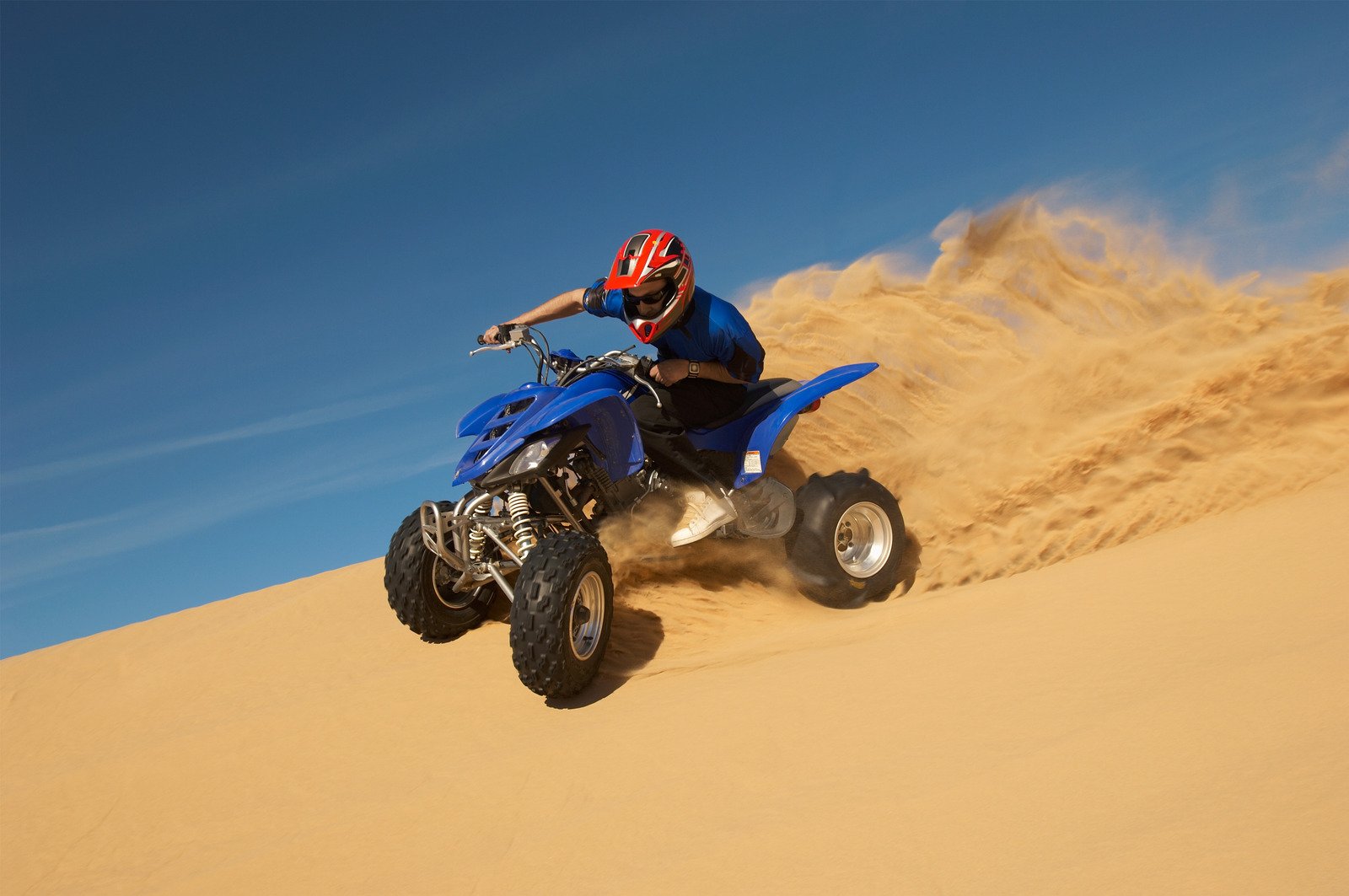
Now that you’re geared up and ready to roll, let’s go over some quick safety tips. Listen up, lads!
Listen to the instructor
Pay close attention to the instructor’s guidelines and safety briefings. They have the knowledge and experience to ensure your safety during the quad biking adventure.
Stick to designated trail
Follow the designated trails like a leprechaun sticking to his pot of gold. Straying off the marked paths can lead to potential dangers and spoil the fun for everyone.
Maintain a safe distance
Keep a safe distance between quads to avoid collisions. Maintaining proper spacing allows everyone to enjoy the ride without risking accidents
Control your speed
As tempting as it may be to channel your inner speed demon, it’s important to control your speed. Maintain a safe and manageable pace, especially in unfamiliar terrains, to avoid accidents and maintain control over your quad.
Avoid risky maneuvers
Leave the extreme stunts to the professionals, lads. Avoid risky maneuvers like wheelies or jumps, as they can lead to loss of control and potential injuries.
Guidelines for Stag Party Quad Biking
Group riding etiquette: When riding in a group, maintain formation and follow the lead of the instructor or designated leader. This ensures smooth coordination and minimizes the chances of confusion or collisions.
Observe trail signs
Pay attention to trail signs and markers. They provide valuable information about upcoming hazards, turns, or changes in terrain, allowing you to adjust your riding accordingly.
Use caution on inclines and descents
Approach inclines and descents with caution, adjusting your speed and body position accordingly. Sudden acceleration or braking can result in loss of control or accidents.
Communicate with hand signals
Establish clear hand signals with your fellow riders to communicate important messages such as slowing down, stopping, or indicating obstacles on the trail. This enhances safety and keeps the group well-coordinated
Be aware of your surroundings
Stay vigilant and constantly scan your surroundings for potential hazards, such as other riders, pedestrians, or wildlife. Being aware of your surroundings allows you to anticipate and react to any unforeseen situations.
By following these safety tips and guidelines, you and your stag party crew can enjoy a thrilling and safe quad biking adventure. Remember, safety always comes first, but that doesn’t mean you can’t have a craic-filled time on those quads!
The Thrill of Quad Biking Adventure Awaits
There you have it, lads! Now you’re equipped with all the knowledge about the essential safety gear and attire for quad biking on your stag party. Remember, safety doesn’t mean sacrificing fun. At Stagit, we’re committed to ensuring your quad biking adventure is a roaring success while keeping you safe and sound.
So, get ready to don your helmets, rev those engines, and embark on a quad biking experience that will have you and your mates talking about it for years to come. Contact us at Stagit, and we’ll make sure your stag party is the stuff of legends. Cheers to epic quad biking adventures and unforgettable stag parties! Sláinte!

 WHICH STAG PARTY SUITS YOUR STAG’S PERSONALITY BEST?
WHICH STAG PARTY SUITS YOUR STAG’S PERSONALITY BEST?